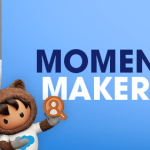To succeed in business, it’s important to understand how your customers’ needs and behaviours are changing over time. A transactional relationship is not enough anymore; you need to engage with them more effectively and build long-term, trusted relationships. One way to do that is to put yourself in the customer’s shoes and observe from their perspective.
That’s where a customer journey map template helps. An integrated customer journey map plots the various stages a person goes through in their purchase cycle when interacting with your company or brand. This lets you better understand customer journeys, enhance the customer experience and increase Customer Lifetime Value.
So how exactly can you create an exceptional customer journey map and use it to effectively manage your customer journeys?
What is a customer journey map?
What is a customer journey map?
A customer journey map is a diagrammatic representation of a customer’s experience with your brand. It helps businesses to understand the customer’s journey and touchpoints with the brand and identify pain points and opportunities for improvement. Since it records individual interactions, a journey map is unique to every customer or to a group of customers with similar attributes.
What does a customer journey map include?
Touchpoints – Channels and interfaces where the customer interacts with your business.
Moments of truth – High-impact experiences that define how customers perceive and relate to your brand.
Potential customer feelings – Alignment of customer experiences at every stage to the most likely customer sentiment.
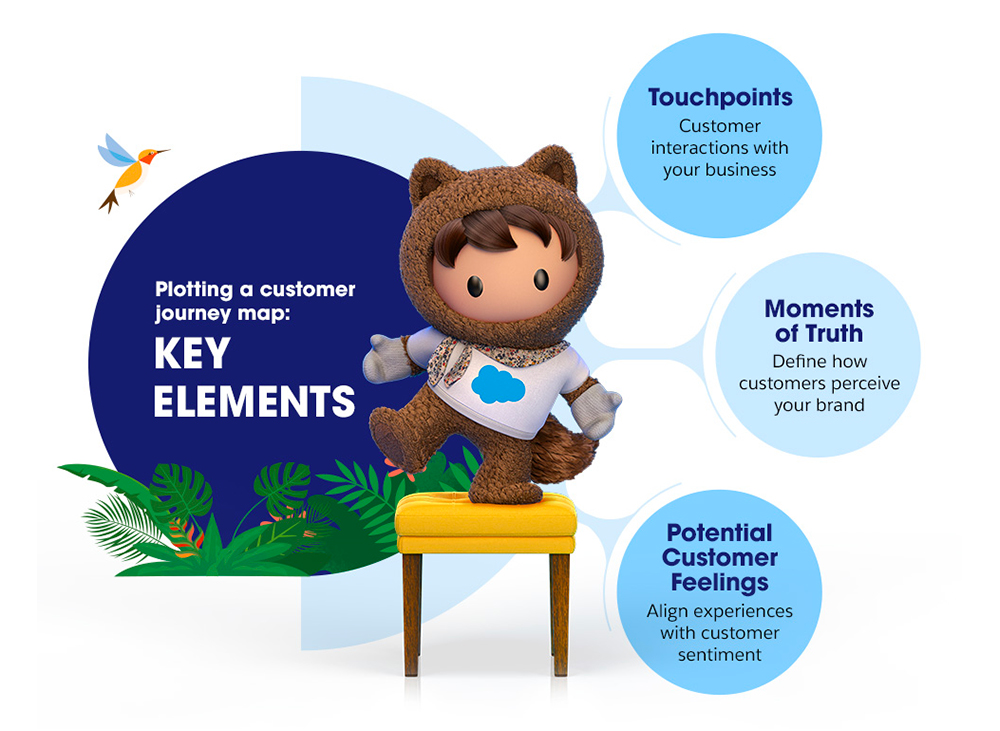
A customer journey map typically includes a timeline of events that reflects the customer’s experience throughout the entire customer lifecycle. This timeline can include various events such as the customer’s first visit to the company’s website, interactions with customer service, marketing and sales communications, purchase and product delivery, and post-purchase support.
While tracking your customer journey, make sure that you customise and fine-tune it by researching and interacting with your target audience. This ensures that the customer journey map accurately reflects their actual experience and needs, letting you create more relevant and personalised customer experiences. To achieve this, you need to combine first-party customer data and analysis with customer feedback and target audience research.
Here’s how to gather information for a customer journey map from customers and target audiences:
- Regularly send out review forms specific to customers’ immediate touchpoints
- Conduct detailed in-person interviews and online surveys
- Introduce gamification as a form of survey methodology
- Implement digital heat maps and in-store technology to understand customer behaviour and patterns
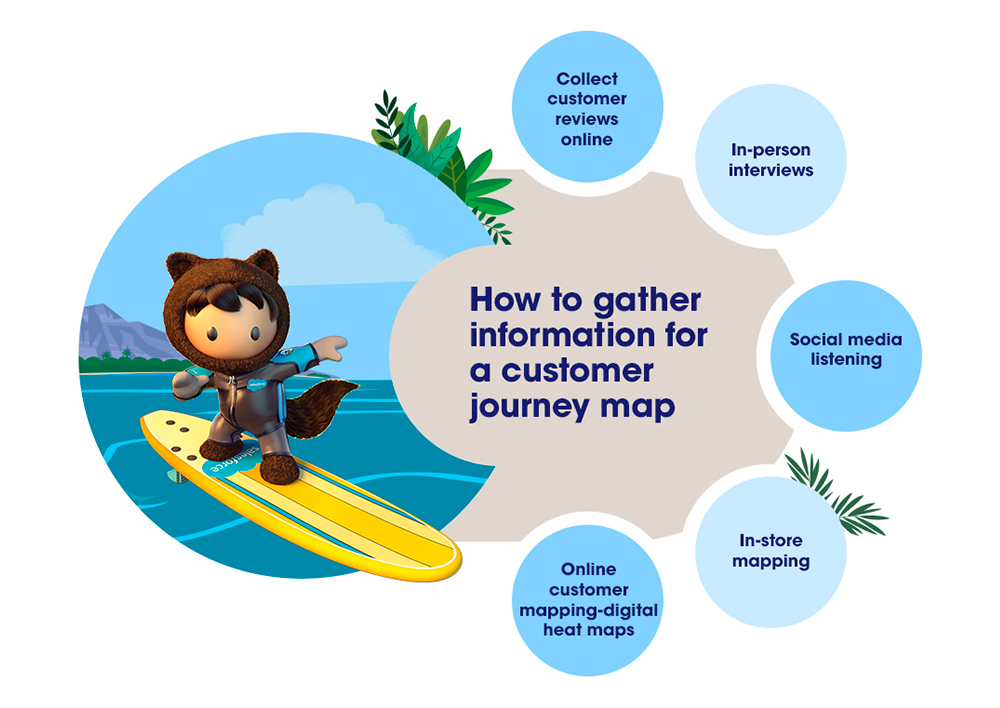
What are the benefits of using customer journey maps?
When designed using thorough research and data-led insights, a customer journey map is a powerful tool that helps businesses boost customer-centricity.
Here are some more benefits of using customer journey maps:
1. Enhances resilience and business agility
Disruptions such as economic downturns may impact consumer behaviour. Understanding the customer journey and identifying pain points lets businesses develop strategies to address issues and build resilience in the face of unexpected challenges or disruptions. Customer journey mapping helps identify the customer journey segments that are most impacted by changes in economic conditions. This helps companies adjust their marketing and sales strategies accordingly.
2. Helps in new product development and boost sales
Even the most innovative products can’t help drive sales if they do not address customer needs. Customer-centric product development involves using customer’s feedback and employing it for creating a product roadmap. Mapping customer journeys helps businesses understand customer needs that are not being met by existing products or services, thus creating opportunities for new product development. It also enables businesses to prioritise product features and functionality based on their impact on the customer experience. This leads to customer-centric product development.
3. Improves customer experience and retains their loyalty
92% of customers agree that the experience a company provides is as important as its products and services. (Salesforce State of Connected Customer report)
Customer journey maps point to areas where customer experience can be improved, leading to increased customer satisfaction and loyalty. For example, you can use customer journey maps to compare the average time taken to resolve customer queries at different points of contact. This lets you identify where support can be improved and redesigned so that queries are addressed within consistent time frames across all touchpoints.
4. Helps understand evolving buyer behaviour
Understanding changing customer needs and expectations is the #1 challenge for sales organisations. (Salesforce State of Sales report)
Mapping the customer journey allows businesses to track the behaviour of their customers at each touchpoint, providing valuable insights into how they interact with the brand. This lets you identify changes in behaviour, shifts in preferences, priorities, and expectations.
5. Optimises the CX ecosystem
Customer journey mapping is critical for a high-on-ROI customer experience ecosystem. It lets you eliminate ineffective interaction points, break down any remaining siloes, and understand data irregularities. It also helps you increase employee accountability and assess ROI on future CX investments.
6. Improves customer engagement
By understanding the customer’s perspective and needs at each touchpoint, businesses can create more relevant and personalised experiences that enhance customer engagement across channels.
How do you create a customer journey map?
With smart customer journey mapping tools, you can connect every interaction across email, mobile, advertising, and the web into a detailed, effective journey map. Follow these steps to create your customer journey map:
1. Understand your goals
Align your customer journey map to your business goals to ensure valuable results for your organisation and the customers. For example, your goal in the current inflation-impacted environment could be to identify touchpoints for intelligent automation, so you could reduce costs without impacting CX.
2. Conduct persona research
The journey belongs to the customer. Hence, it is vital to research persona-specific demographics and interests. It allows you to infer behaviour and patterns through the customer journey map.
3. Map customer touchpoints
Plotting various points of interaction in the customer journey involves tracking actions and their impact on customer behaviour. The activities include online and offline ads, website UI or in-store design,
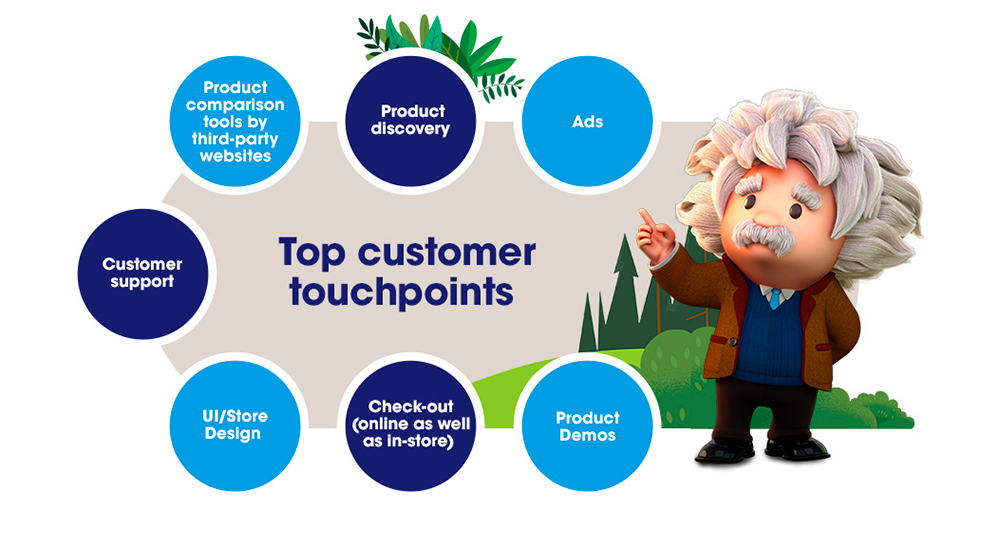
4. Map the current state
Wondering how to map the customer experience across the customer journey? Use data from an integrated CRM platform to get insights into customer interactions, behaviours, preferences, and pain points. This helps businesses create more effective customer journey maps that accurately reflect the customer experience. It also reveals trends and patterns in customer behaviour that may not be immediately apparent, helping you identify areas of improvement. For example, data around cart abandonment rates lets you learn which stage of customer interaction needs maximum intervention to improve checkout rates.
5. Visualise your ideal future state
Once you have mapped the current state of the customer journey, define the ideal future state. This lets you direct customer journeys toward your goals. For example, if you aim to unlock greater sales, you may visualise an ideal future state where customer conversion increases by 5% across the top 3 touchpoints. To achieve this, you can implement different strategies such as optimising website design and streamlining checkout processes. The customer journey maps help measure the effectiveness of these strategies.
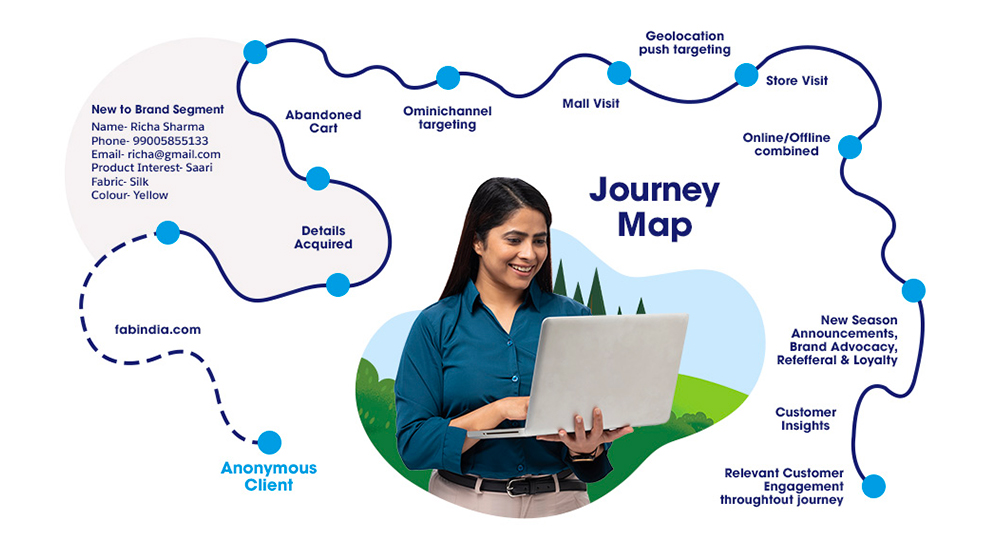
Types of customer journey maps
Each customer journey map serves a specific purpose and offers different insights. Choosing the right type can help businesses achieve their objectives more effectively.
A few of the top customer journey map types are:
Customer experience map: Lets you measure a range of factors, such as brand consistency, purchase convenience, and service efficacy. It allows you to identify your business’s weaknesses and strengths when offering a delightful customer experience.
Current state of the customer journey map: Beneficial for optimising operations across points of contact. It gives clear, visual insights into top-performing and least-performing touchpoints regarding delivered value.
Future state of the customer journey map: Helps you lay the path for multiple teams regarding future performance and operations scaling. For example, it informs your marketing team about the type of digital assets they should build to support the ideal customer journey.
Empathy customer journey map: Understanding how customers feel, think, and act about your product, services, and brand is critical to business growth. This map lets you analyse customer sentiments at all engagement points and learn how and where you must make minimal but relevant changes for maximum impact.
Device experience journey map: In a mobile-first environment, smooth UI and UX are critical to winning and keeping customers. A device-focused map lets you identify gaps and opportunities in the app, website, or any other asset design; it enhances your device experience at increased speed-to-market.
Customer support journey map: Buyers increasingly link customer support with the overall customer experience. This map is an effective tool for understanding the ease of access to customer support and the efficacy of your query resolution.
Path-to-purchase journey map: In an ideal environment, customers experience a smooth and quick path to purchase. This map lets you identify how your channels perform in this context, as well as opportunities for improvement.
Product discovery journey map: A smooth and consistent product discovery across touchpoints keeps a visiting customer engaged. Use this customer journey map for insights into the earliest interactions and experiences that shape a customer’s perception.
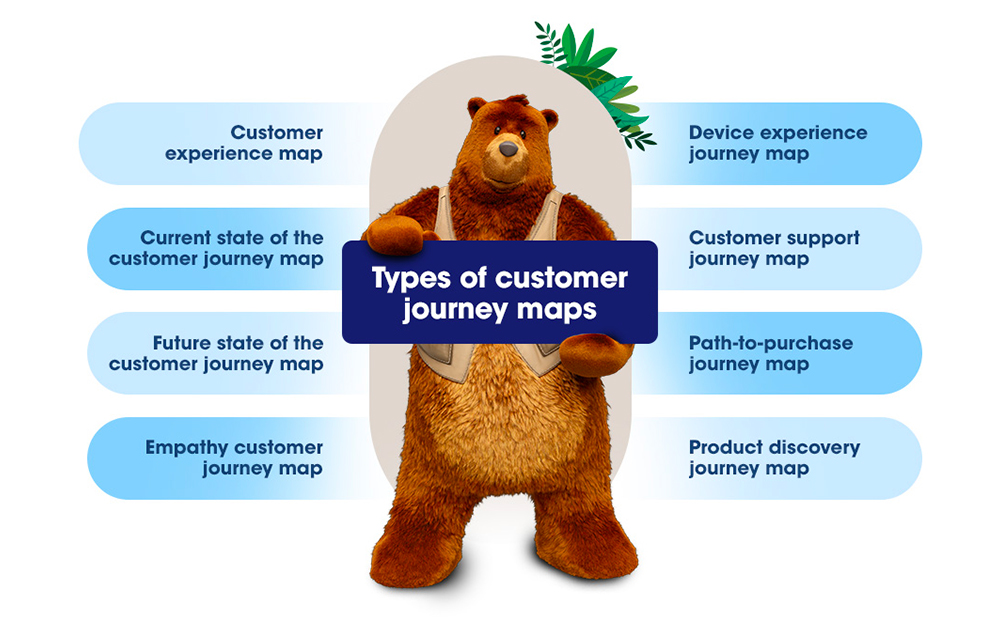
Customer journey map templates
In a digital-first customer environment, mapping integrated, complex customer journeys is time, resource, and effort-intensive. Effective customer journey management needs cross-functional collaboration as well as customer journey analytics and mapping tools.
Sounds complex? To ensure that you don’t have to start from scratch, you can leverage customer journey map templates – frameworks that help simplify the process and let you save precious time.
What is a customer journey map template?
A customer journey map template is a pre-designed framework that outlines the key stages and touchpoints of a typical customer journey. A handy tool with pre-built fields, it provides a starting point for businesses to create their own customer journey maps, allowing them to customise the template to their specific needs and target audience. Templates may vary in design and format but typically include sections for customer goals, pain points, emotions, and actions at each touchpoint.
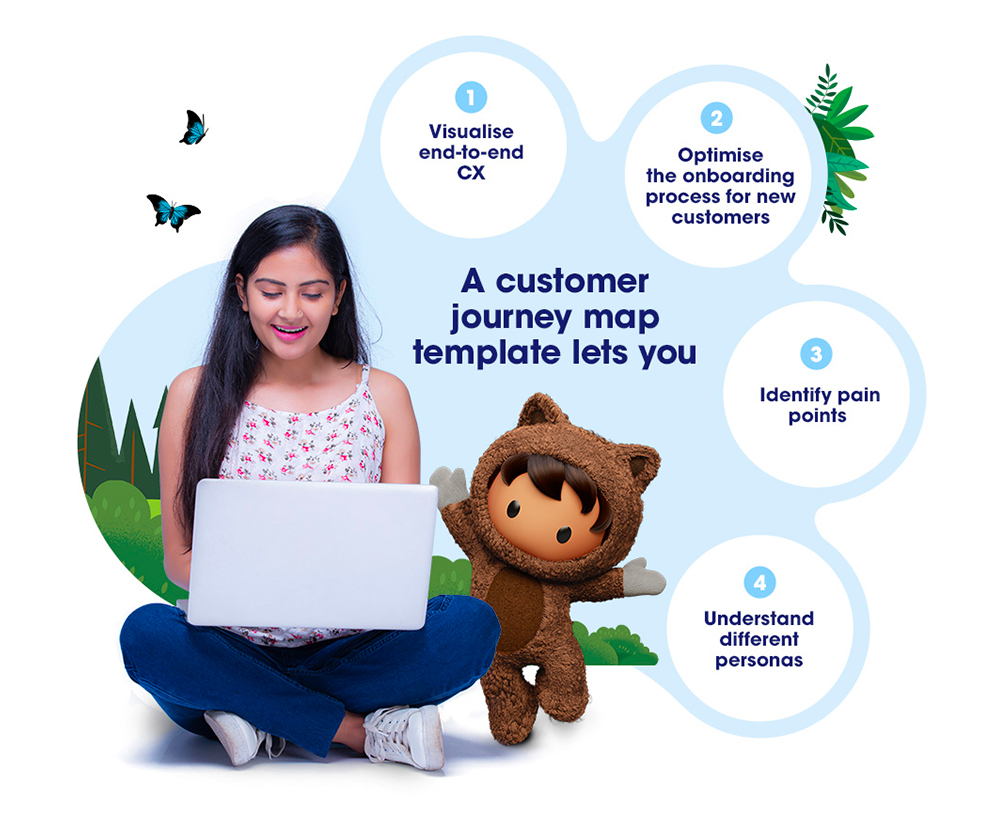
Visualise end-to-end CX
In an omnichannel environment, designing an end-to-end customer journey map can be overwhelming. You might end up focusing too much on elements that offer little value while missing out on key factors. A template enables easier customer journey visualisation, ensuring you have all the parameters you need to picture the CX journey from start to finish.
Ensure satisfying onboarding experience
The initial customer onboarding experience often defines if customers will stay with you in the long run. An effective customer journey map template ensures that you cover all the necessary steps in the onboarding journey, letting you optimise and enhance the customer experience at this crucial interaction.
Unresolved customer pain points are the fastest way to lose business. Customer journey map templates provide structured frameworks that outline each step of the customer journey, making it easier for you to quickly identify areas of friction and rally your teams for prompt resolution.
Understand different customer personas
Templates enable businesses to understand and analyse customers based on customer journey mapping goals. For example, a product discovery map template may quickly let you categorise customers into:
- Review-led customers
- Ad-driven customers
- Brand content consumers
Assuming your goal with such a customer journey map is to engage potential customers more effectively, this template lets you understand what touchpoints will best work for a customer segment or persona.
See how we can help you find, win, and keep more customers



When to use a customer journey map template
A template is most beneficial when you are willing to tailor and measure the impact of the maps aligned to specific goals. The top scenarios where you should use a customer journey map template for visible business results include:
In developing a deep understanding of your customers
A customer journey map template includes a range of pre-built fields that streamline the process of capturing data, making it an efficient and effective way for you to gain insights into your customers. By using a customer journey template, you can identify key fields and metrics to track, such as customer demographics, behaviour patterns, and pain points. This allows you to gain a more holistic understanding of your customers and identify common parameters for analysing and improving the customer experience.
To improve customer experiences
73% of customers agree that they lose trust in companies when there’s a lack of consistency across touchpoints. (Salesforce State of Connected Customer report)
A customer journey mapping template provides a standardised framework for businesses to visualise and analyse the customer experience. Templates help ensure that all touchpoints are accounted for and aligned with the overall customer journey strategy. They ensure consistency across multiple maps, making customer journey analysis easier across different engagement points and channels.
To build long-term brand trust
In today’s trust-based economy, you must continuously optimise your customer journey to win trust. A template highlights the opportunities for customer journey optimisation, allowing you to strengthen trust at every touchpoint. For example, a template provides universally accepted ways to map the state of customer service, customer sentiments towards reviews, the extent of customer loyalty, and so on.
To deliver business value and increase retention
A template offers significant value in using the customer journey for greater retention and sales. It helps you save time and effort by providing pre-designed formats and layouts for creating journey maps rather than starting from scratch each time. Using time-tested routes to focus on key factors such as moments of truth, customer service, customer experience, and trust leads to increased business value.
Design impactful customer journey map templates with Salesforce Worksheet set
Use our free resource — Customer Journey Worksheet set



What does a sample customer journey map look like?
Here is an example of a customer journey map for a SaaS company, outlining the customer journey for a new asset:
- Awareness: The customer becomes aware of the asset through social media, online ads, or word-of-mouth recommendations.
- Consideration: The customer explores the asset’s features and benefits on the company’s website, including product demos, customer reviews, and pricing information.
- Purchase: The customer makes a purchase online, through a sales representative, or through a reseller.
- Onboarding: The customer receives a welcome email or call and is guided through the setup process, including account creation, data import, and training.
- Adoption: The customer starts using the asset to manage their customer data, track leads and deals, and so on.
- Optimisation: The customer discovers advanced features and integrations, receives ongoing training and support, and provides feedback to the company.
- Renewal: The customer renews their subscription or upgrades to a higher tier, based on their evolving business needs and goals.
By mapping out this customer journey, the SaaS company can better understand the customer’s needs and pain points at each stage, and tailor their communication and support accordingly.
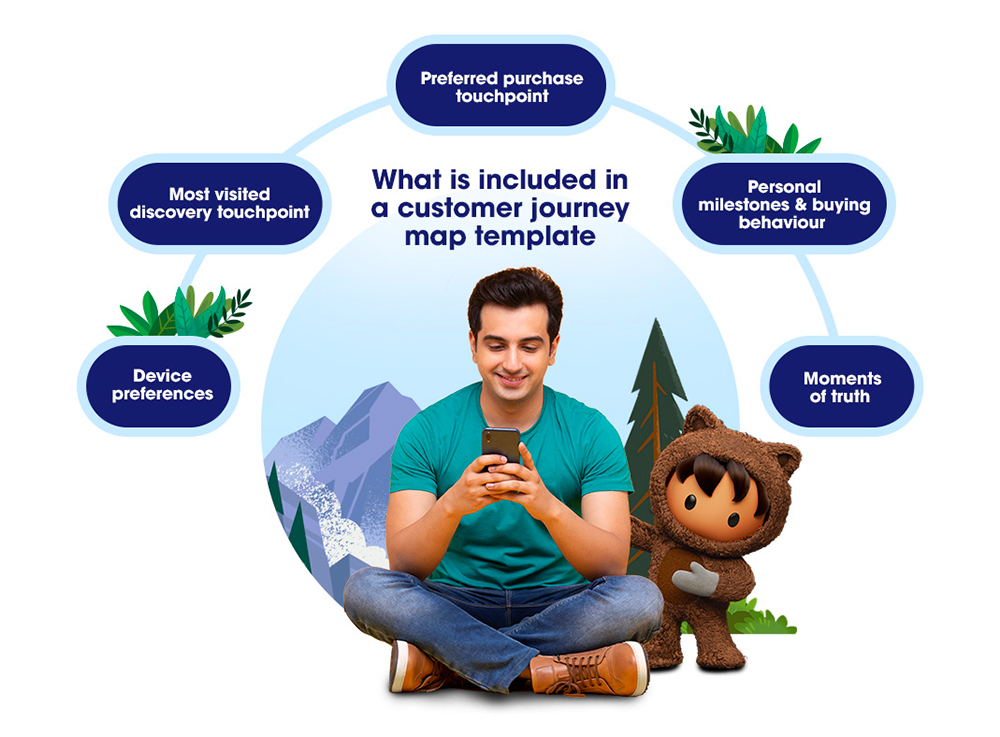
Customer journey mapping is becoming increasingly important for organisations looking to improve their overall business results. By identifying pain points and developing strategies for improvement, customer journey mapping is your golden ticket to winning and keeping customers, engaging more efficiently, and building lifelong trusted relationships.
Unsure where to start? Check out our free journey builder demo for more productive brainstorming sessions around customer journey mapping. This structured framework helps you to capture data, identify high-potential moments of truth and take the first step towards creating a more engaging and satisfying customer experience.
Improve customer experience and convert leads faster
Learn about Customer Journey Maps with a free journey builder demo.



Here are some more resources to help you create impactful customer journey maps and achieve success now:
Using technology to connect the dots in the retail customer journey
Using technology across touchpoints for a digital-first customer insurance journey




















